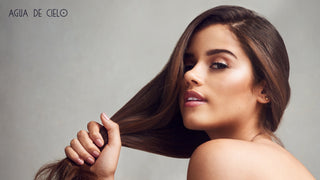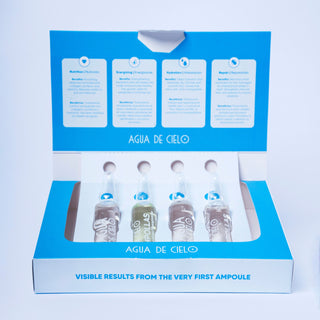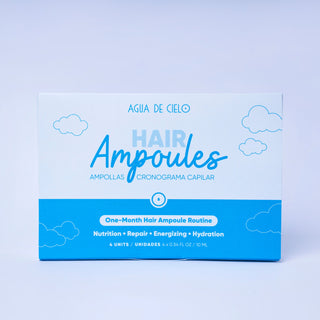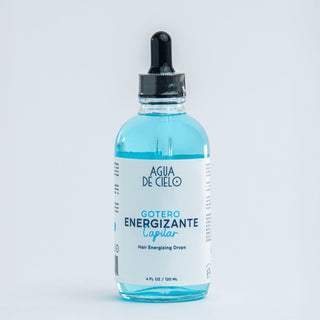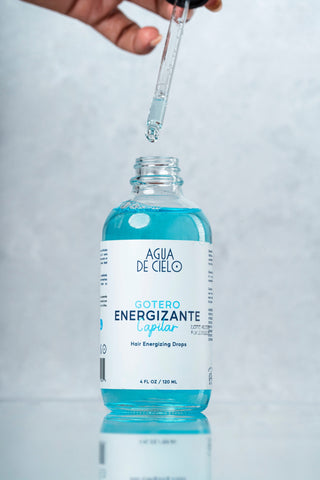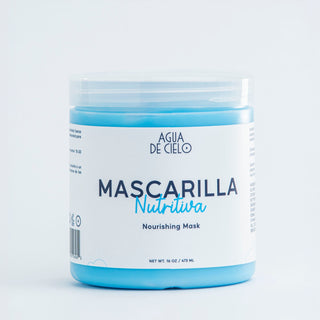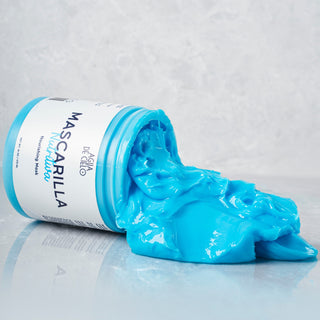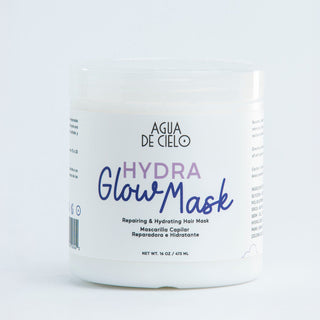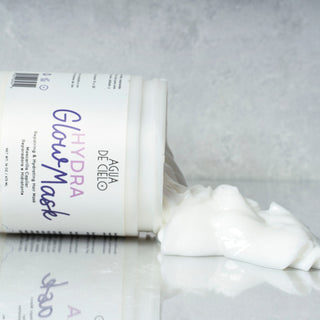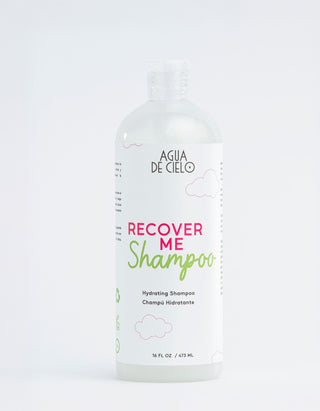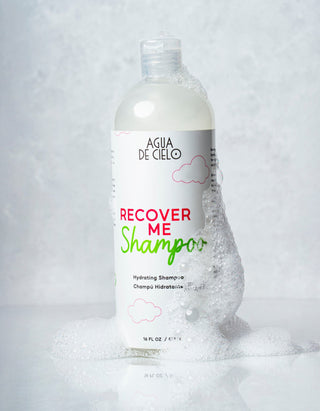If you’ve ever asked yourself, “Why is my hair stretchy?” you’re not alone.
Lots of people notice their hair feels different when wet — sometimes it stretches like a rubber band, other times it snaps instantly.
The difference comes down to hair elasticity.
In this guide, we’ll break down:
- What hair elasticity is (and why it matters).
- Whether hair is supposed to be stretchy.
- How to test your hair elasticity at home.
- & more
And of course, we’ll share some of the best Agua de Cielo products that restore elasticity and make hair bouncy and beautiful.

What Is Hair Elasticity?
Hair elasticity is your hair’s ability to stretch and return to its original shape without breaking.
Think of your hair like a rope:
- A strong rope bends and flexes, but doesn’t fray.
- A weak rope either stretches too far and unravels… or it snaps the second you pull on it.
The same happens with hair. Healthy strands have a balance of moisture (for flexibility) and protein (for strength). Together, they give your hair bounce, resilience, and shine.

Is Hair Supposed to Be Stretchy?
Yes — but only to a point.
Here’s what healthy elasticity looks like:
- When hair is wet, it should stretch about 30-50% (Collins, 2024) and then return to its normal length.
- When hair is dry, it should only stretch slightly before snapping.
So if you’re wondering, “Is hair supposed to be stretchy?” the answer is: a little bit, yes. But if it feels gummy, limp, or breaks too easily, that’s a sign your elasticity is out of balance.
Why Isn't My Hair Stretchy?
Sometimes the problem isn’t hair that stretches too much — it’s hair that doesn’t stretch at all. Instead, it feels brittle and breaks instantly when you tug on it.
Here’s why that happens:
1. Protein Overload (Too Rigid)
- Some treatments or products add too much protein without balancing moisture.
- Hair becomes stiff, hard, and inflexible.
- When you stretch it, it snaps like a dry twig.
2. Severe Moisture Loss (Dehydration)
- Overuse of heat tools, harsh shampoos, or chemical processing strips natural oils.
- Without enough water inside the strand, hair loses its bounce.
- Instead of stretching, it just breaks apart.
3. Cumulative Damage
- Bleach, color, sun, and friction all wear down the cuticle.
- The inner fiber is exposed and weakened.
- Hair loses the ability to bend or flex.
Bottom line: If your hair isn’t stretchy at all, it’s a sign of dryness, rigidity, or deep structural damage. The solution is restoring balance — not just adding protein, but also reintroducing moisture and sealing it in.
The Hair Elasticity Test (At-Home Method)
The hair elasticity test is simple, quick, and tells you exactly what your hair needs.
- Take a single wet strand of hair.
- Hold it between your fingers and gently stretch.
- Watch how it reacts:
- Bounces back: Congrats! Your hair has good elasticity.
- Stretches too far, feels gummy: Too much moisture, not enough strength.
- Snaps quickly: Too much protein loss, not enough flexibility.

This 10-second test is the secret to choosing the right treatments — instead of guessing.
How to Improve Hair Elasticity (Step by Step)
Now that you know the “why,” here’s how to restore balance.
Step 1: Add Protein for Strength
If your hair is brittle and snapping like a twig, it needs reinforcement. Protein works like scaffolding — it rebuilds the inner structure of your strands.
👉 Try our Anti-Breakage Liquid Hair Mask
- Lightweight formula that strengthens without making hair stiff.
- Targets weak, damaged areas to reduce breakage.
- Perfect for post-color or heat-damaged hair.
Use it once a week for a boost of elasticity. But ensure to follow up with a conditioner or hair mask since it will leave your hair hard.

Step 2: Restore Balance with Treatments
Protein alone isn’t enough. Hair also needs hydration to stay flexible. That’s why balance matters more than any single ingredient.
- Includes five ampoules designed for hydration, repair, nutrition, growth, and elasticity.
- The Elasticity Ampoule specifically targets gummy, overstretched hair.
- Think of it as a “reset button” for your strands.

Step 3: Lock It All In
If you don’t seal your hair, everything you add will escape. Moisture and protein slip out, leaving your hair back where it started.
👉 Finish with the Everything Serum
- Locks in hydration and protein.
- Protects against heat, humidity, and frizz.
- Leaves hair smooth and shiny — without weighing it down.
This step is non-negotiable if you want results that last.
Other Tips to Protect Elasticity
Besides treatments, small daily habits make a big difference.
- Wash less often. Over-washing can strip natural oils and dry out hair.
- Air dry when possible. Heat strips protein.
- Use wide-tooth combs. Less stress = less breakage.
- Sleep on silk. Cotton roughs up the cuticle, while silk keeps it smooth.
Elasticity is about consistency, not just quick fixes.
Related Reading
Want to dive deeper? Check out these guides on our blog:
These articles give you other tips and info on how to keep your hair young and beautiful.
Final Word: Don’t Ignore Your Hair’s Stretchiness
Hair elasticity is the hidden factor that determines whether your hair looks strong, shiny, and bouncy… or weak, flat, and damaged.
If your hair feels weak and brittle, try this formula:
- Protein for strength.
- Moisture for flexibility.
- Sealing for protection.
That’s how you restore balance and prevent future breakage.

👉 Ready to fix your hair elasticity? Explore the Agua de Cielo collection
and start building your routine today.
Because healthy, elastic hair isn’t just about looking good — it’s about feeling confident every time you touch your strands.


